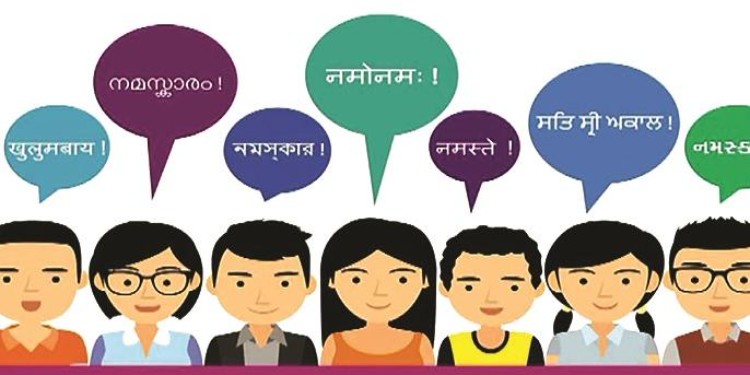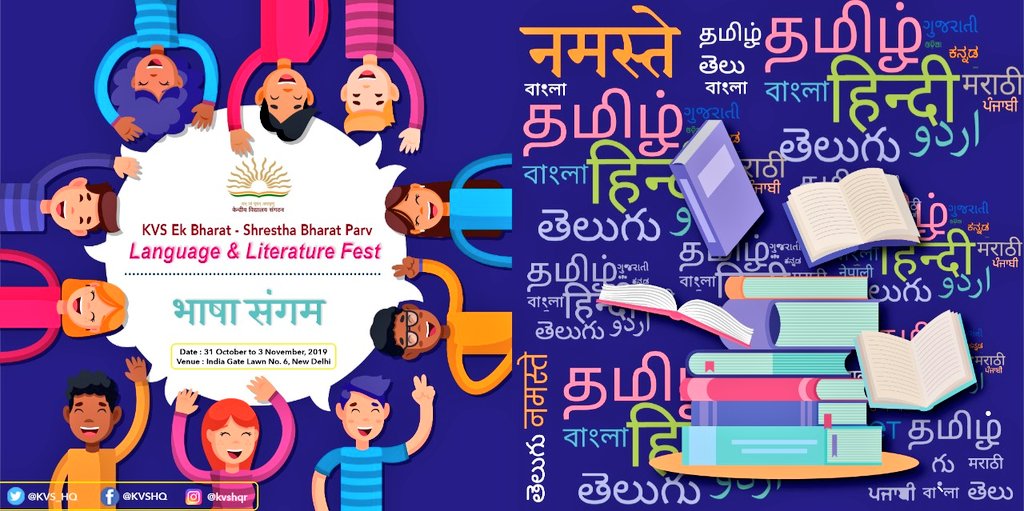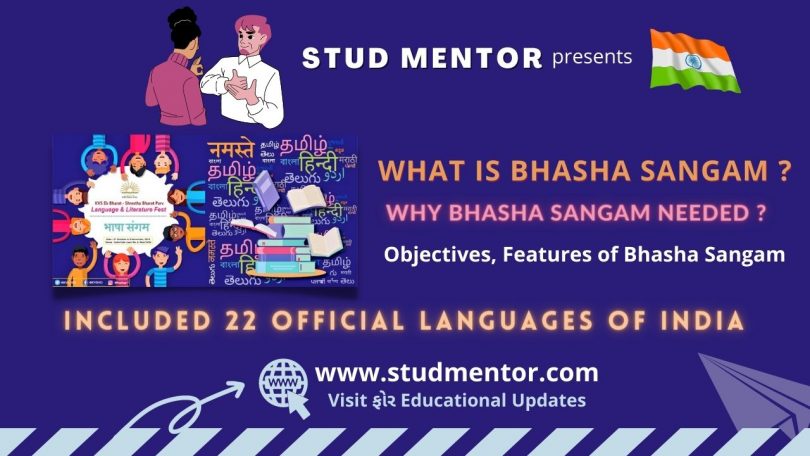What is Bhasha Sangam ?

India’s richness is marked by her cultural, ethnic and linguistic diversity. Languages enrich our cultural, social and educational practices. Bhasha Sangam under the Ek Bharat Shreshtha Bharat initiative celebrates the unique features of our country through promoting languages among young learners in school. Schools and educational institutions provide multilingual exposure to students in the 22 Indian languages of the Schedule VII of the Constitution of India.
Bhasha Sangam brings to students, teachers, parents and those interested in getting familiarized with and learning Indian languages, the 100 sentences in various themes in 22 Indian languages to be practiced by schools with creative activities to enhance language learning.
22 Official Languages of India
One can learn all the 22 official languages of India for free from the app:
1) Assamese, (2) Bengali, (3) Gujarati, (4) Hindi, (5) Kannada, (6) Kashmiri, (7) Konkani, (8) Malayalam, (9) Manipuri, (10) Marathi, (11) Nepali, (12) Oriya, (13) Punjabi, (14) Sanskrit, (15) Sindhi, (16) Tamil, (17) Telugu, (18) Urdu (19) Bodo, (20) Santhali, (21) Maithili and (22) Dogri.
Why Bhasha Sangam ?

Benefitting from India’s great cultural and linguistic diversity would go a long way in the progression of our civilization as profound as has been experienced throughout history. Bhasha Sangam attempts to realize the celebration of diversity and rich linguistic strength through language learning in school.
A Language is an exact reflection of the character and growth if its speakers – M. K. Gandhi
Objectives of Bhasha Sangam
- To Familiarize students with all the 22 Indian languages of the 8th schedule of the Indian Constitution.
- To faster linguistic harmony among students and promote national integration through learning of languages.
- To bring students close to the unique cultural hues and diversity of our country through languages.
Features of Bhasha Sangam

- Bhasha Sangam is implemented by the State/UT Department of School Education.
- Short dialogues consisting of 100 simple, commonly used sentences have been designed in the 22 languages for use by students of all classes. The dialogues are based on 10 themes relevant to a student.
- States or schools in the state can choose any language to practice and carry out the Bhasha Sangam activity. Once one language is done for about a month, the school can move to another language as per their convenience and time.
- The letters of alphabet of each language and simple proverbs and saying etc. will also be added in the language spoken.
- At the end of the event, there can be a competition.
- The suggested activities should be carried out in a joyful and interesting manner for the students to enjoy and participate.
- Heads of schools may upload photographs and videos of daily activities under Bhasha Sangam. The State/U.T. Department of School Education and the DEOs and BEOs may also upload/submit photos and videos of the activities at the State/U.T. level, and the district and the block level respectively.
- The Department of School Education and Literacy, Ministry of Education, Government of India will recognize and award the best schools, the best blocks, the best district and the best State/U.T. on the basis of the uploaded / submitted photographs and videos.
Suggested Activities of Bhasha Sangam
- There are 100 sentences in 10 different themes. Students will speak the language chosen by the class/school. The sentences may be read out thematically in the morning assembly, in any class or during launch and students will be asked to repeat them.
- Students may be encouraged to read the sentences if they know the languages.
- Similarly, any teacher, parent, government servant or any other person from that State or anyone who speaks the language, may be invited to read out the sentences.
- Senior students may be encouraged to create posters on these sentences; these can be put up all over the school.
- Teachers may address the students and converse with them in the language of the day, and encourage the students to do the same.
- Students may be encouraged to share these sentences with their families at home.
- The schools may carry out other activities related to this initiative.
- Folk tales, folk songs and folk dance in these languages can be used to provide exposure and create interest in these languages.
- While teaching Geography, Languages, History or Environmental Studies, the dialogues can be used whenever suitable / appropriate (as the dialogues are based on 10 different themes).
If you talk to a man in a language he understands, that goes to his head. If you talk to him in his language , that goes to his heart. – Nelson Mandela



